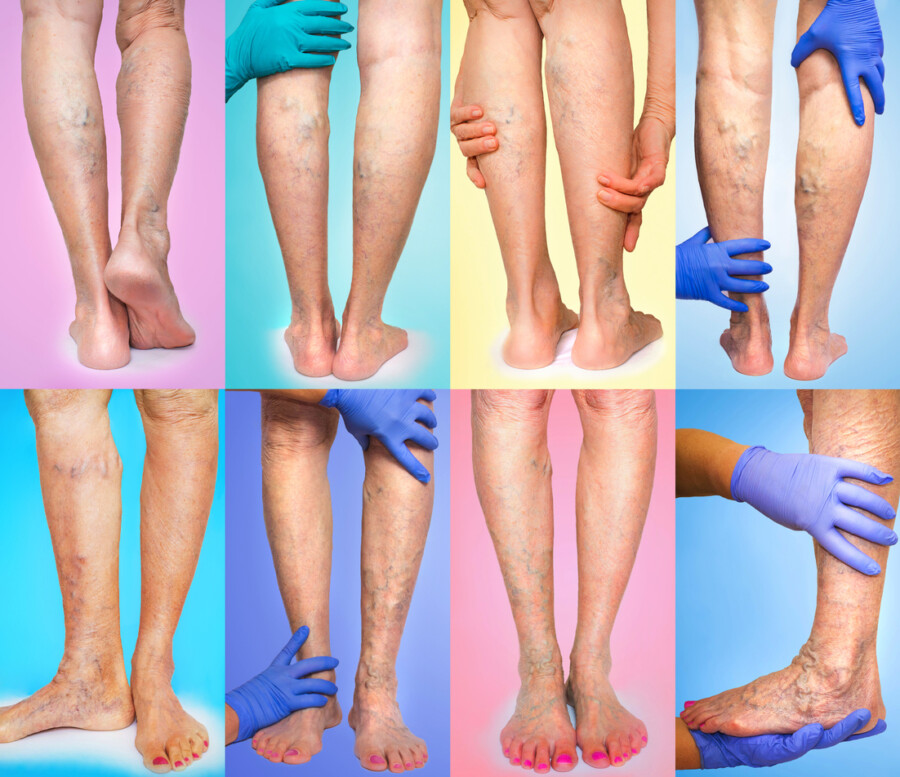What's the Difference Between Varicose Veins and Spider Veins?

Though they often occur together, varicose veins and spider veins are quite different. Learn the causes and treatments for these vascular conditions.
As the long New Hampshire winter slowly turns into spring and summer, Granite Staters can prepare for the warm temperatures by treating the varicose veins and spider veins they’ve hidden under layers of cold weather clothes. After all, the state offers nearly 1,000 lakes and a 19-mile seashore for summertime activities to look forward to.
Although varicose veins and spider veins develop because of poorly performing veins, the conditions are quite different in appearance, symptoms, and treatment modes. Here’s a quick primer on varicose veins and spider veins.
Varicose Veins Vs. Spider Veins
Varicose veins and spider veins are symptoms of venous insufficiency, an umbrella term for veins that have stopped pumping blood efficiently to the heart due to malfunctioning valves in the veins. This allows blood to leak and pool within the vein, eventually forming a visible varicose vein or spider vein. Both conditions develop because of similar risk factors — age, obesity, heredity, sedentary lifestyle, and for women, hormonal changes due to pregnancy and menopause. Varicose veins and spider veins can sometimes appear together, but that’s where the similarities end.
Spider veins are small tangles of red, blue, and purple dilated veins that typically appear on the surface of your legs or face. Usually less than 1 millimeter in diameter, spider veins are flat and don’t cause any noticeable symptoms. Treatment for spider veins is primarily done for cosmetic reasons, as they don’t indicate a serious underlying medical issue. A procedure known as sclerotherapy that injects a safe solution into the vein is the most common therapy for spider veins. The solution seals up the vein and blood diverts to healthier veins. Eventually, the spider vein fades.
By contrast, varicose veins are larger — 3 millimeters in diameter or more. They are raised and have a rope-like appearance, and most often form on the calves, thighs, and ankles. Although varicose veins may not cause noticeable symptoms for some patients, many complain of pain, swelling, cramping, itching, and heaviness in the legs that affects their quality of life.
Varicose veins are considered a more serious medical problem than spider veins, and not just because of the uncomfortable symptoms. Left untreated, varicose veins could advance to open, infected sores, uncontrolled bleeding, or even blood clots. A varicose vein warm or tender to the touch could mean a blood clot has formed. A blood clot requires immediate medical attention to prevent the clot from breaking off and traveling to the lungs, where it could be potentially dangerous.
Depending upon the size of the varicose veins, treatment options include sclerotherapy, laser or radiofrequency ablation that uses heat to collapse the varicose vein, or ambulatory phlebectomy, a procedure that removes the varicose vein through a small incision. These procedures are all minimally invasive and use little to no anesthesia. After a brief recovery period, you’ll return to your normal activities, which, if your procedure is done in late winter, means you can show off your legs this summer at the beach.
Get Ready for the New Hampshire Summer Now
Center for Vein Restoration operates two branches in New Hampshire. Both are overseen by Dr. Normand Miller, MD, FACS, RPVI, RVT, a Board Certified Vascular Surgeon specializing in vascular disease and venous insufficiency. An authority in treating varicose veins and spider veins, Dr. Miller focuses on treating each patient with compassion and expert care. Contact us today for an appointment.
400 Amherst St.
Suite 402
Nashua, NH 03063
224 Main St.
Suite 1-D
Salem, NH 03079